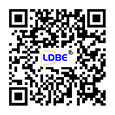The difference between FP laser and DFB laser
Time:2024-02-18
Views:297
The FP laser FP (Fabry-perot) laser is a semiconductor light-emitting device that emits multi-longitudinal mode coherent light with a FP cavity as a resonant cavity. FP lasers are mainly used for low-rate short-distance transmission. For example, the transmission distance is generally within 20 km, the speed is generally within 1.25 G, and the FP is divided into two wavelengths, 1310 nm / 1550 nm.
Nowadays, some manufacturers have produced Gigabit 40km optical modules for FP devices in order to reduce costs. In order to achieve the corresponding transmission distance, the optical power must be increased. The long-term work will cause the devices of the products to age and shorten the use. life. According to the engineer‘s recommendation 1.25G 40km dual fiber module, the application of DFB devices is more secure!
Performance parameters of the FP laser: 1) Operating wavelength: The center wavelength of the spectrum emitted by the laser. 2) Spectral Width: The root mean square spectral width of a multi-longitudinal mode laser. 3) Threshold current: The laser emits a laser with good coherence when the operating current of the device exceeds the threshold current. 4) Output optical power: The optical power emitted by the laser output port.
The DFB laser uses a grating optics device based on the FP laser to allow the device to have only one longitudinal mode output. DFB (Distributed Feedback Laser) is generally divided into two types of wavelengths: 1310nm and 1550nm. It is divided into cooling and non-cooling. It is mainly used for high-speed medium-long-distance transmission, and the transmission distance is generally above 40 kilometers.
Performance parameters of the DFB laser: 1) Operating wavelength: The center wavelength of the spectrum emitted by the laser. 2) Side mode suppression ratio: the power ratio of the laser working main mode to the maximum side mode. 3) -20 dB spectral width: the spectral width at 20 dB is reduced by the highest point of the laser output spectrum. 4) Threshold current: The laser emits
Nowadays, some manufacturers have produced Gigabit 40km optical modules for FP devices in order to reduce costs. In order to achieve the corresponding transmission distance, the optical power must be increased. The long-term work will cause the devices of the products to age and shorten the use. life. According to the engineer‘s recommendation 1.25G 40km dual fiber module, the application of DFB devices is more secure!
Performance parameters of the FP laser: 1) Operating wavelength: The center wavelength of the spectrum emitted by the laser. 2) Spectral Width: The root mean square spectral width of a multi-longitudinal mode laser. 3) Threshold current: The laser emits a laser with good coherence when the operating current of the device exceeds the threshold current. 4) Output optical power: The optical power emitted by the laser output port.
The DFB laser uses a grating optics device based on the FP laser to allow the device to have only one longitudinal mode output. DFB (Distributed Feedback Laser) is generally divided into two types of wavelengths: 1310nm and 1550nm. It is divided into cooling and non-cooling. It is mainly used for high-speed medium-long-distance transmission, and the transmission distance is generally above 40 kilometers.
Performance parameters of the DFB laser: 1) Operating wavelength: The center wavelength of the spectrum emitted by the laser. 2) Side mode suppression ratio: the power ratio of the laser working main mode to the maximum side mode. 3) -20 dB spectral width: the spectral width at 20 dB is reduced by the highest point of the laser output spectrum. 4) Threshold current: The laser emits







